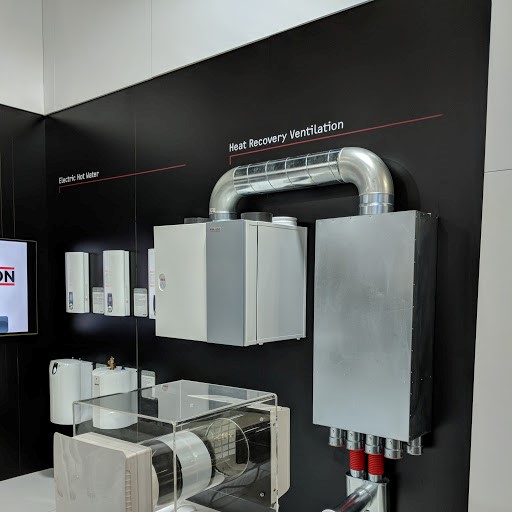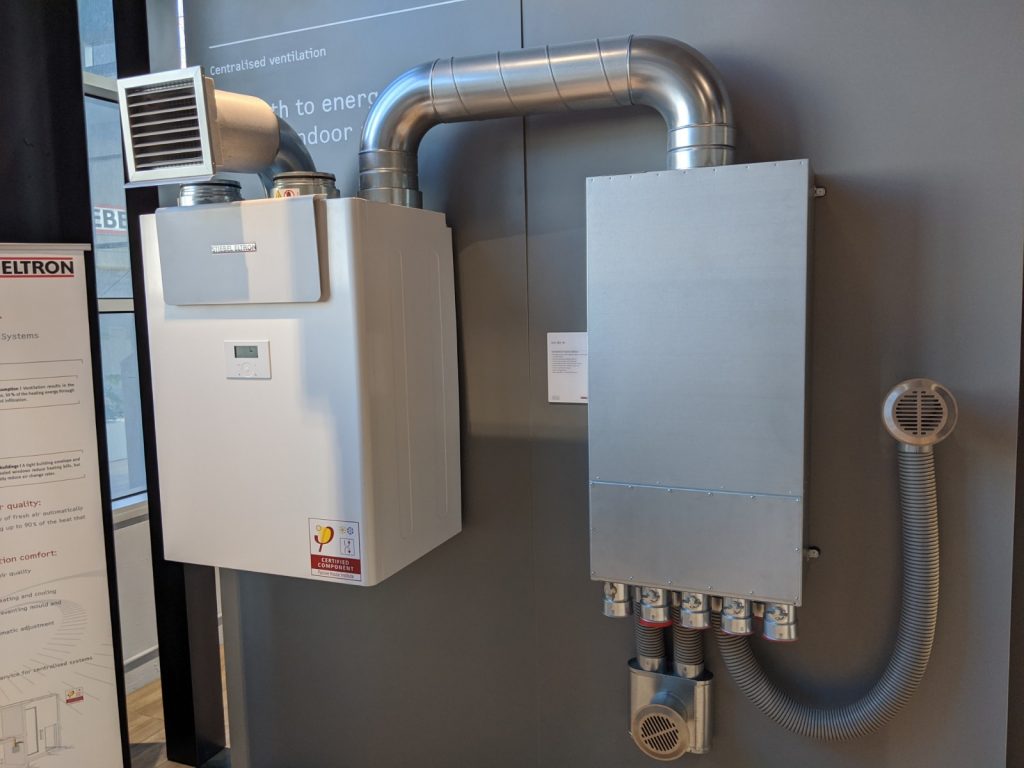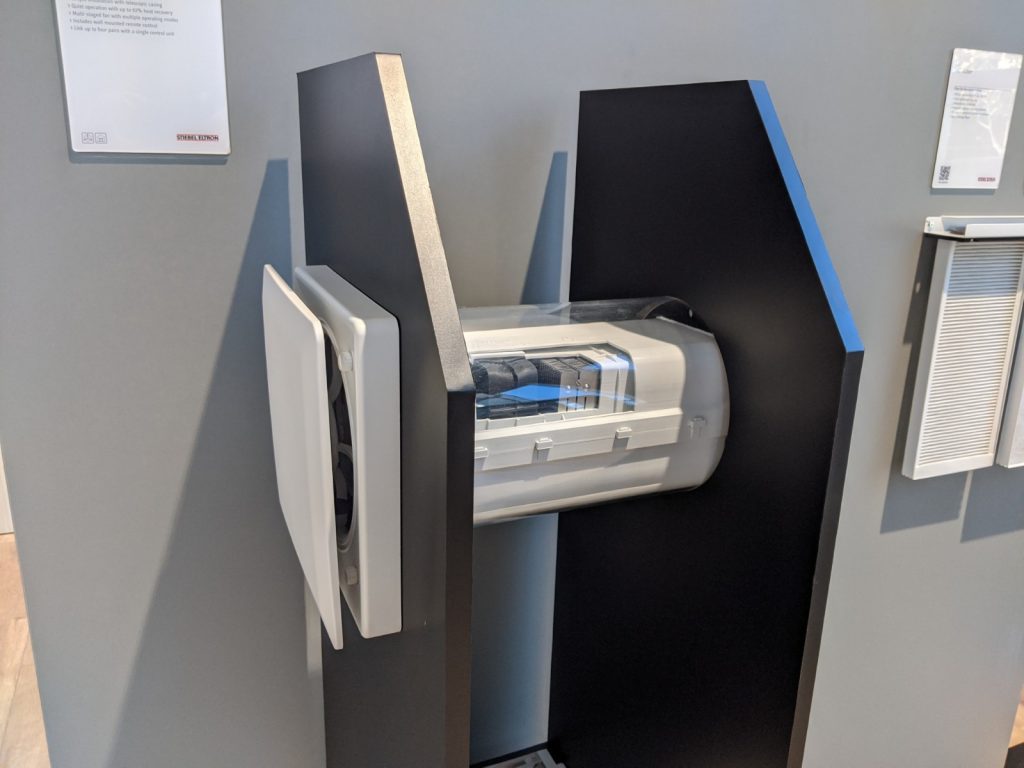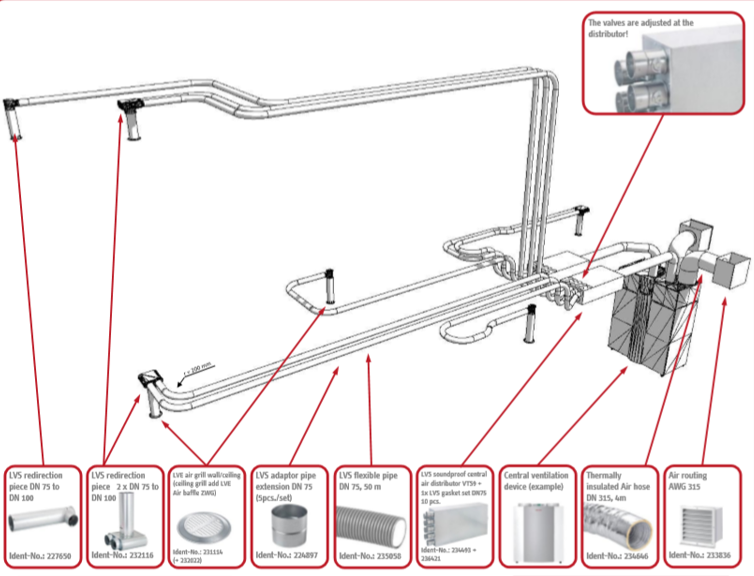
Improve Air Quality & Heat Loss
Heat Recovery Ventilation (HRV) will help reduce heat loss, improve your air quality hence reduce running costs. This is especially important for highly efficient, air tight houses.
Houses built many years ago were so leaky that the question about the need for fresh air never arose. They had high heat loss in winter and heat gain in summer. Therefore, they were difficult and expensive to heat and cool.
Modern homes are built to a much higher standard and made more air tight to reduce heat loss in winter and heat gain in summer. Therefore, they have a greater need for Heat Recovery Ventilation (HRV) to keep them well ventilated.
HRV or ERV Ventilation
Southern and inland Australian climates generally have low humidity so HRV systems are appropriate. They transfer dry heating or cooling (sensible heat) from the outflow air to the inflow air.
However, in northern climates, high summer humidity (latent heat) is a big issue. Therefore, Energy Recovery Ventilation (ERV) is more appropriate. ERV systems reduce humidity in the incoming fresh air.
Both HRV and ERV systems provide heat recovery ventilation designed to reduce heat loss in winter and heat gain in summer.
Need for Fresh Air in Modern Homes
- Heat recovery ventilation is becoming more popular in modern homes as air tightness increases.
- Homes with high thermal performance are very air-tight. Consider HRV if your thermal performance Star Rating is more the 7.
- Your home will feel fresh and airy from a higher rate of air change.
- The heating or cooling in the stale outflow air is transferred to the fresh inflow air.
- A poorly ventilated home will make you feel drowsy, give you headaches or worse.
Benefits of HRV & ERV Ventilation
• Improved air quality, home feels fresh and airy
• Reduces airborne allergens such as pollen, pet dander, dust mites and mould
• Makes your home more hygienic
• Lowers your heating and cooling costs (can be up to 25% saving in an air tight home)
• Improves your home’s energy rating
• Reduces the size and cost of your heat pump &/or air conditioner (both capital and operating)
• Installation is easier than a similar sized air conditioner
• An ERV ventilation system additionally reduces excess moisture that could lead to mould formation.


Decentralised Ventilators
- The simplest ventilation system is the decentralised HRV system, sold in pairs.
- One ventilator pushes whilst the other pulls air across a ceramic plate transferring the heating or cooling energy for about a minute. It then reverses to deliver this heating or cooling to the incoming air.
- A pair of decentralised ventilators will typically service an area of 50 m2. They can be grouped with up to 5 pairs working together.
Centralised Ventilators
- The centralised system uses a single indoor ventilation unit. It uses concealed ducting to distribute the fresh outside air throughout the house. At the same time, it draws in the stale inside air and expels that outside.
- Installing HRV or ERV ventilators reduces your heating and cooling loads. Therefore, you can reduce the size of your heat pump or air conditioner accordingly. This will save money on purchase and running costs.

